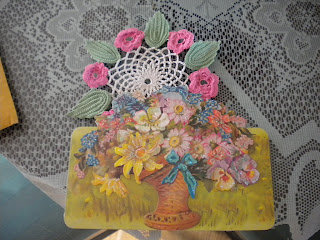
One of the most famous places in our Maryland corridor on the harbor is Ft. McHenry. We captured some lovely
pics for you to enjoy.
***(copied history from Ft. McHenry site)FORT McHENRY: AN AMERICAN FORT
Revolutionary War 1776-1783
Fort McHenry's history began in 1776 when the citizens of Baltimore Town feared an attack by British ships. An earthen star fort known as Fort Whetstone was quickly constructed. The fort, like Baltimore, was never attacked during our first conflict with En gland.
gland.
The Formative Years, 1794-1811
In 1793, France declared a war on England that became known as the Napoleonic Wars. In 1794, Congress authorized the construction of a series of coastal forts to protect our maritime frontier. Construction began on Fort McHenry in 1798 and, by 1803, the masonry walls we view today were completed. The fort was named for James McHenry, our second Secretary of War. In 1809, the U.S. Army's first light artillery unit was organized here.
The War of 1812
On June 18, 1812, the United States declared war on England, in part to "preserve Free Trade & Sailor's Rights." In August 1814, British forces marched on Washington, defeated U.S. forces, and burned the Capitol. Then, on September 13-14, the British attacked Fort McHenry. The failure of the bombardment and sight of the American flag inspired Francis Scott Key to compose "The Star-Spangled Banner."
Construction Period, 1829-1842
Following the War of 1812, new methods of coastal defense brought about changes that resulted in the fort we view today. Among the changes was the addition of a second story with porches on the buildings and the completion of new earthen battery with larger guns.
The Mexican War, 1846-1848
During the war years, Maryland units, as well as federal units, were trained here before being sent to war with Mexico. Soon  after this conflict, Colonel R.E. Lee came to Baltimore to supervise construction of Fort Carroll (1848-1852) in Baltimore harbor.
after this conflict, Colonel R.E. Lee came to Baltimore to supervise construction of Fort Carroll (1848-1852) in Baltimore harbor.
The Civil War, 1861-1865
During the war, Baltimore was an important rail and communications center. Union troops occupied Baltimore to ensure that Maryland remained in federal control. In 1861, members of the Maryland Legislature were imprisoned at Fort McHenry to prevent any passage of an Act of Secession. Following the Battle of Gettysburg in 1863, nearly 7,000 Confederate soldiers were imprisoned here.
 Spanish - American War, 1898
Spanish - American War, 1898
While "Remember the Maine" became the battle cry of Americans an our war with Spain, Fort McHenry's only involvement was the training of the 6th U.S. Artillery here before being sent to Cuba. Several forts were built along the Patapsco River to protect the approach to Baltimore.
Farewell Fort McHenry, 1912
By the late 19th century Fort McHenry was of little military value. On July 20, 1912, the last active garrison, the 141st Coastal Artillery Company, departed Fort McHenry ending over 110 years of service at the fort. Two years later the City of Baltimore held the centennial celebration of the Battle of Baltimore.
World War I Period, 1917-1925
In 1917, the U.S. Army established General Hospital No.2, a 3,000 bed facility to treat wounded soldiers returning from Europe. The hospital developed into a major surgical center, specializing in neuro and reconstructive surgery. In 1922, two years after the hospital closed, the army began to remove the buildings. In 1925, Fort McHenry was established as a national park under the War Department.


The harbor is such a pretty sight ...





Debbie & my hubby Harold ...


My cousin Debbie from New Mexico came to Baltimore for the weekend so met & had lunch after touring Ft. McHenry.
I look a feel a lot better now, I was so sick.

































































